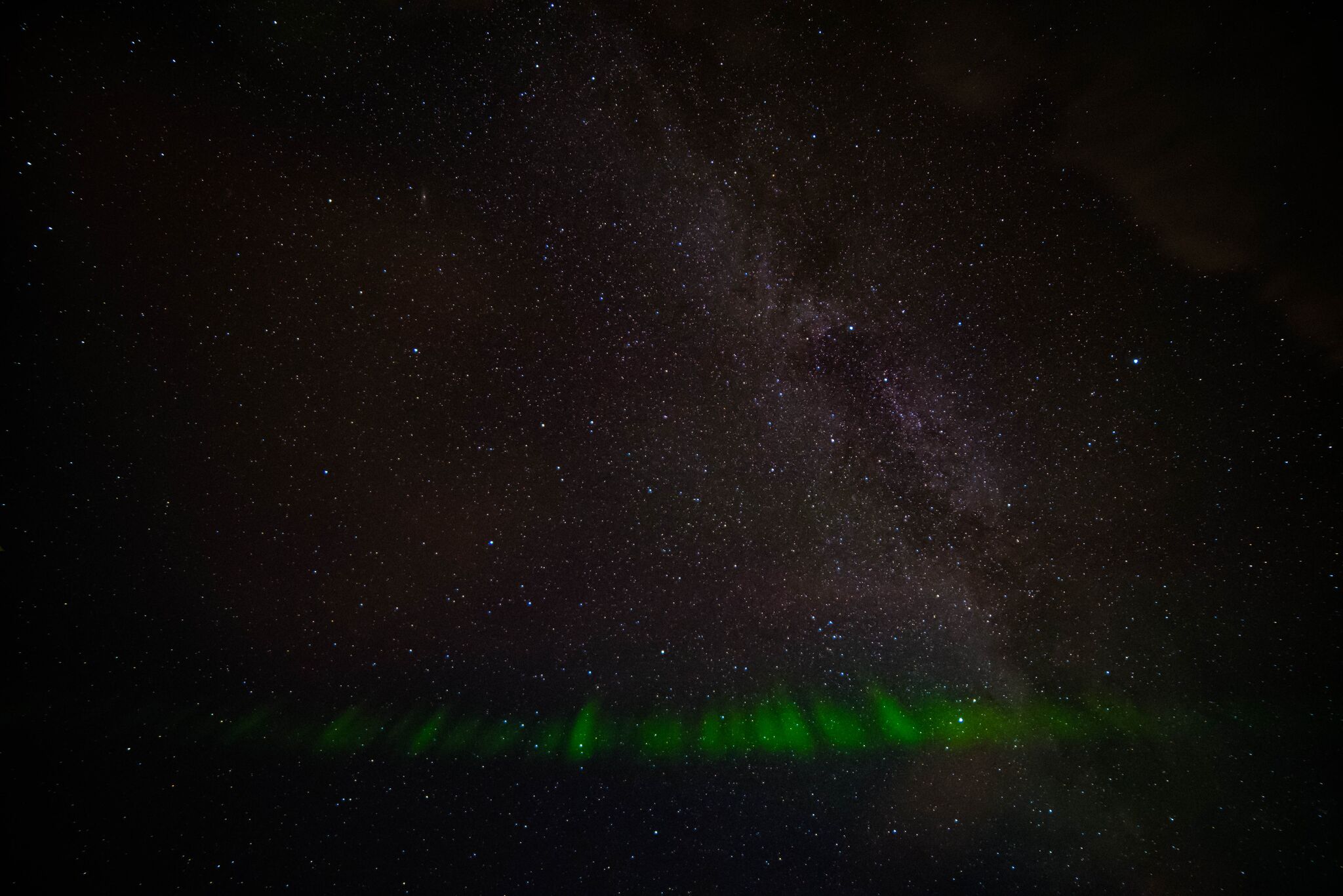Glowing in mostly purple and green colors, a new celestial phenomenon is sparking the interest of scientists, photographers and astronauts. The display was initially discovered by a group of citizen scientists who took pictures of the unusual lights and playfully named them “Steve.” Scientists have since learned more about the purples and greens, and have given it a more accurate name: Strong Thermal Emission Velocity Enhancement, which can still can be shortened to STEVE.
Credits: Krista Trinder
Mystery of Purple Lights in Sky Solved With Help From Citizen Scientists
When a thin purple ribbon of light appeared and starting glowing in the midnight sky over Regina, Canada, in 2016, Notanee Bourassa knew that what he was seeing was not normal. Having watched the northern lights for almost 30 years, he knew this wasn’t an aurora. It was something else.
A citizen science project called Aurorasaurus, funded by NASA and the National Science Foundation, wants your help gathering photos so they can learn more about this mysterious phenomenon. Aurorasaurus tracks appearances of auroras — and now STEVE — around the world through users submitting reports and photographs directly on its mobile app and on aurorasaurus.org.
Research about STEVE is providing a new visual identifier to help track the chemical and physical processes going on in near Earth space. This information can ultimately help us better understand the space weather near Earth which can interfere with satellites and communications signals.
Whether you’re an astronaut, a scientist, or an intrepid sky gazer, you can help scientists learn more about STEVE’s appearance, lifecycle and implications.
What should you know if you want to see STEVE? Below are tips from what we have learned so far to help you in your STEVE hunting.
- STEVE appears closer to the equator than where normal — often green — auroras appear. It appears approximately 5-10 degrees farther south in the Northern Hemisphere. This means it could appear overhead at latitudes similar to Calgary, Canada.
- The phenomenon has been reported from the United Kingdom, Canada, Alaska, northern U.S. states and New Zealand.
- STEVE is a very narrow arc, aligned east-west, and extends for hundreds or thousands of miles.
- Sometimes the phenomenon is accompanied by a rapidly evolving green picket fence structure that is short-lived.
- STEVE can last 20 minutes to an hour.
- STEVE has only been spotted so far in the presence of an aurora (but auroras often occur without STEVE). Scientists are investigating to learn more about how the two phenomena are connected.
- STEVE may only appear in certain seasons. It was not observed from October 2016 to February 2017. It also wasn’t seen from October 2017 to February 2018.
- STEVE mostly emits light in purple hues.

The purple ribbon of STEVE is accompanied with green lights in a picket fence structure. Credits: © Megan Hoffman
Steve (and aurora) sightings can be reported at www.aurorasaurus.org or with the Aurorasaurus free mobile apps on Android and iOS. Anyone can sign up, receive alerts and submit reports for free.
By Kasha Patel
NASA’s Goddard Space Flight Center, Greenbelt, Md.



























